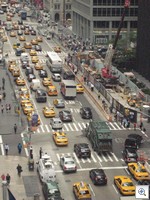Rotating buildings, petrofuel, and ICT in Africa – Day 2 of the World Technology Summit
Share Rotating buildings, petrofuel, and ICT in Africa – Day 2 of the World Technology Summit on Facebook
Share Rotating buildings, petrofuel, and ICT in Africa – Day 2 of the World Technology Summit on Twitter (X)
Share Rotating buildings, petrofuel, and ICT in Africa – Day 2 of the World Technology Summit on LinkedIn
Here are my notes from Day 2 of the World Technology Summit. I’ve been hangin’ with Dr. John Nash, my colleague at ISU. Today we learned about India’s Barefoot College (impressive!), Microsoft’s vision for the future, rotating buildings, petrofuel, ICT in Africa, and much more.
Bunker Roy, The Barefoot College
Christofer Toumaz & Keith Errey, Toumaz Technology

Ian Sands, Director of Envisoning, Microsoft
David Fisher, Dynamic Architecture
Content not available
John Maraganore, Alnylam Pharmaceuticals
The underrecognized: A scenario planning exercise (facilitated by Art Kleiner, strategy+business)
ICT for development, Paul Kagame, President of Rwanda
The future of media in a socially-networked world
Philip Warner, Eden Park Illumination
Photo credits





